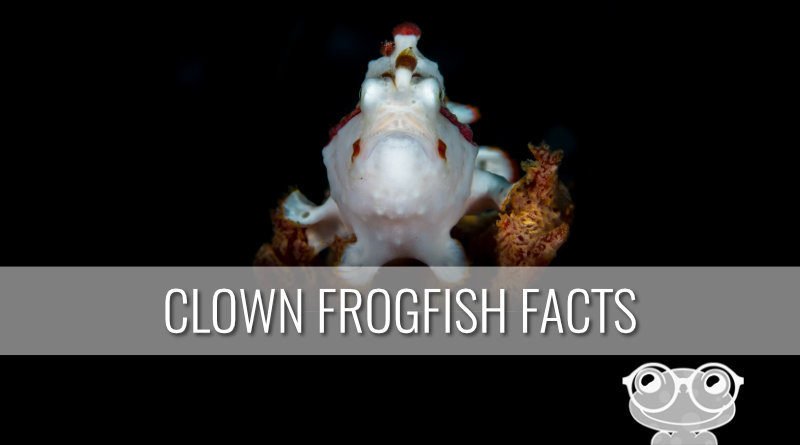Last modified on March 12th, 2022 at 10:27 am
Clown Frog Fish Facts 2022
For divers and anglers, it is important to understand what lies under the water. You need to know how to identify threats, know what creatures will give you the best photographs and what you can eat. Although it is often overlooked, it is important to educate yourself on the clown frogfish. This is not a common name, and you may be thinking there is an error in the text. But the clown frogfish has nothing to do with Nemo, and there is such a thing. And they are just as weird and interesting as their name suggests.
Clown Frogfish Facts
Some of the most interesting facts about the clown frogfish include:
Hidden In Plain Sight
Frog fish are masters of blending in, regardless of their odd appearance. Much like a chameleon and octopus, frog fish can change their coloring to match their surroundings. This ability to camouflage is amazing to watch and can make them very hard to spot.
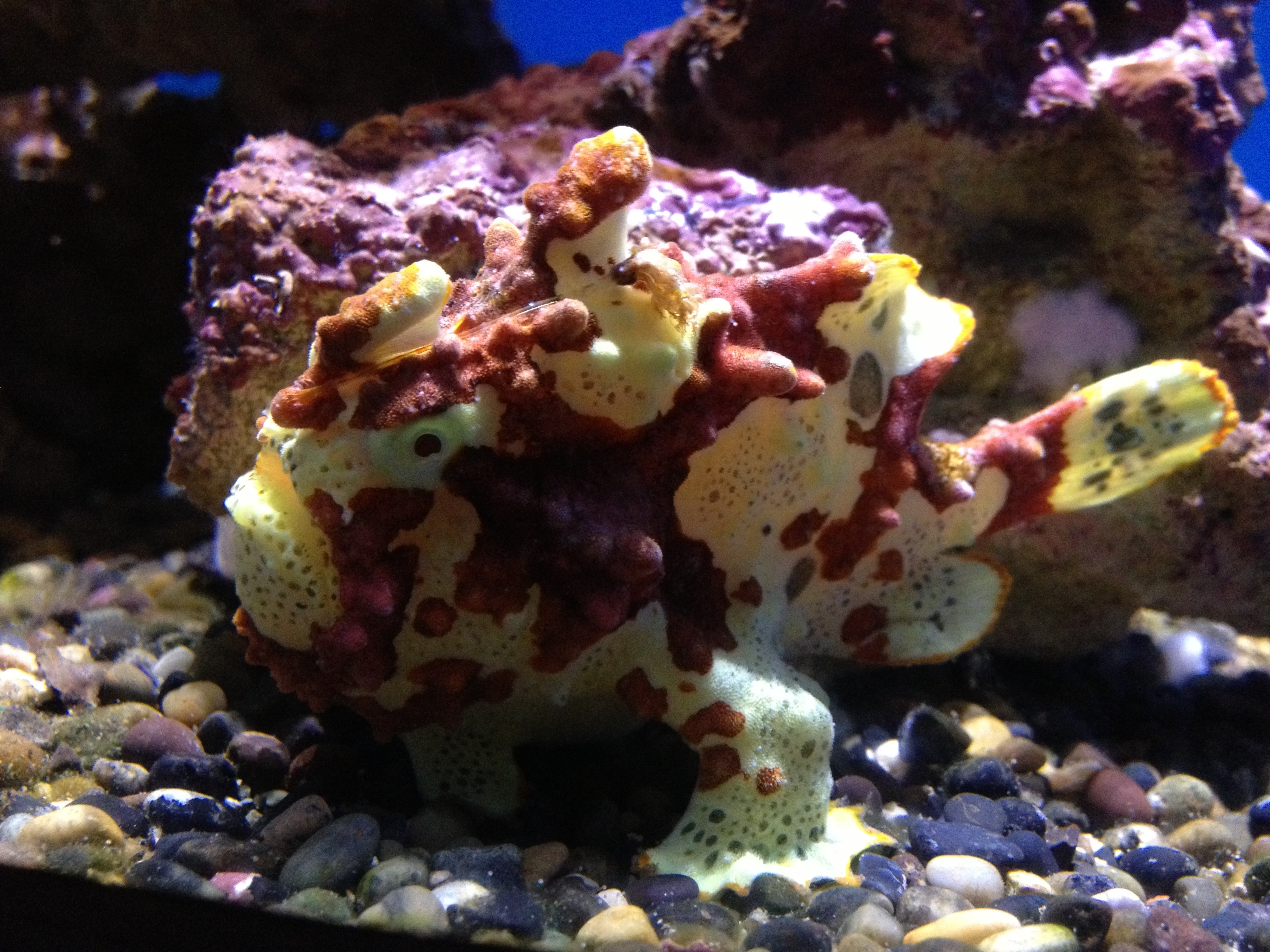
Not An Easy Prey
The frogfish has two natural predators: the moray eel and other frogfish. For this reason, the frogfish does not need to use its camouflage to hide away from those trying to attack them. Instead, the frogfish utilizes its ability to blend in to get the advantage on its prey. That means that these carnivores are definitely the predators in the ocean and should not be underestimated.
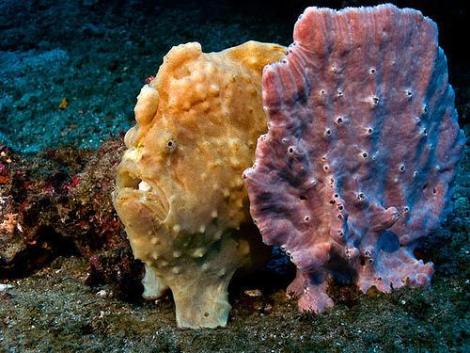
An Avid Angler
Frogfish are a type of anglerfish. This means that they have a lure-like protrusion on their heads that acts as bait to other fish. They lay still and camouflage themselves to blend into their environment. The lure moves with the water and entices nearby fish to snatch up the easy meal. When the fish are close enough to the frogfish, it will strike and claim its prey. This makes them a fish that actually fishes for their food.
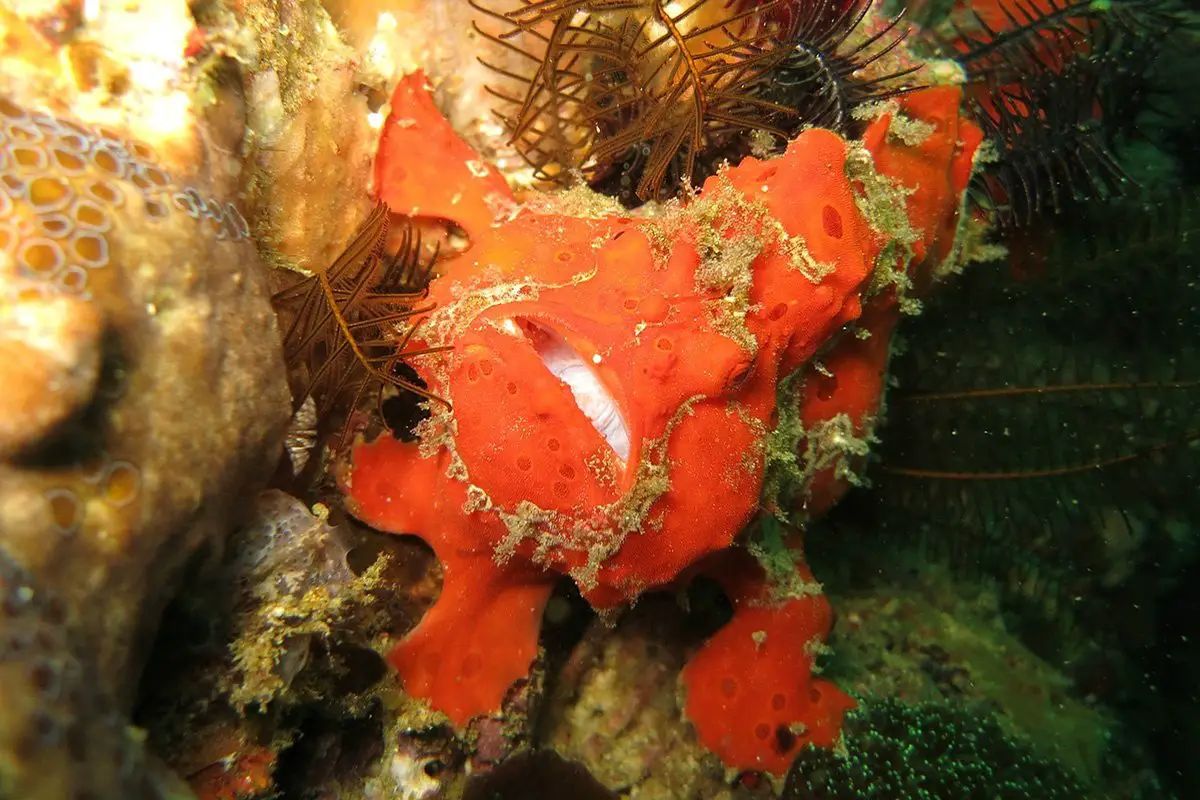
Big Mouths
A frogfish isn’t just going to attack its prey after luring it in, it is going to suck in up whole. Frogfish have no teeth and can’t chew their food. This means that everything is swallowed in one piece, while still alive. To do this, the frogfish needs to be able to open its mouth wide enough to accommodate her prey. Frogfish can open their mouths up to 12 times its normal size, making it easy to suck in its prey.

Walking Around
Frogfish are not born with a swim bladder like most other fish. This makes it very difficult for them to swim around in the water, much less make it to the surface. Instead, the frogfish uses its fins to move around the bottom of the water. This gives them the appearance of walking, rather than swimming. This, along with their appearance, helped the frogfish get its name.
If a frogfish wants to get around faster, they will take in large amounts of water through their mouths. That water is then quickly and forcefully shot out through the frogfish’s gills, located near the base of the tail. This allows the frogfish to propel forward, covering more distance than their form of walking would.
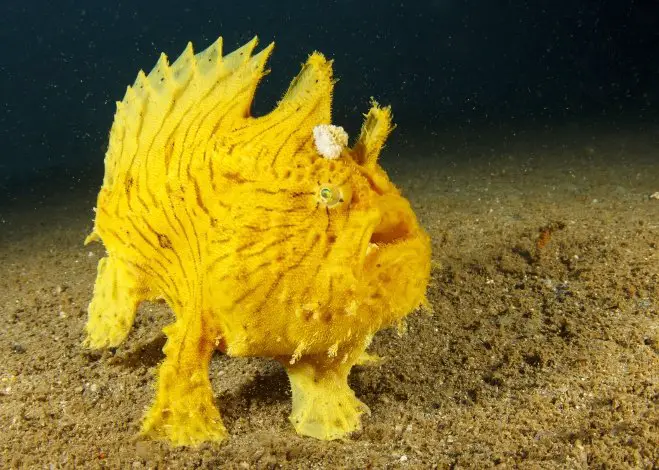
Very Flexible
Frogfish have extremely flexible stomach and jaw bones to accommodate the prey that they are eating. This means that they can eat prey that are far larger than their mouths or stomachs, and the frogfish’s body will stretch to accommodate the food. This means that prey twice the size of the frogfish is still fair game.
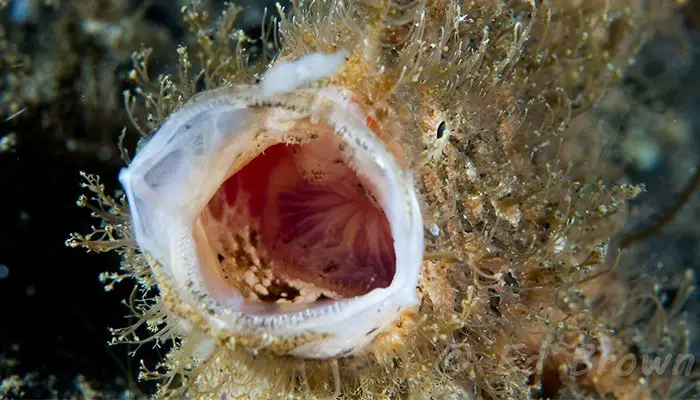
Quick Strike
Frogfish are great at taking it slow and being patient for a meal. But once food crosses their path, frogfish immediately jump into action and suck up their prey. This action is so fast that it holds the record for fastest strike. This is not only includes other fish or sea life, but all animals. The frogfish can suck up its prey in only six milliseconds. That means that it is almost impossible to escape the frogfish once it lunges.
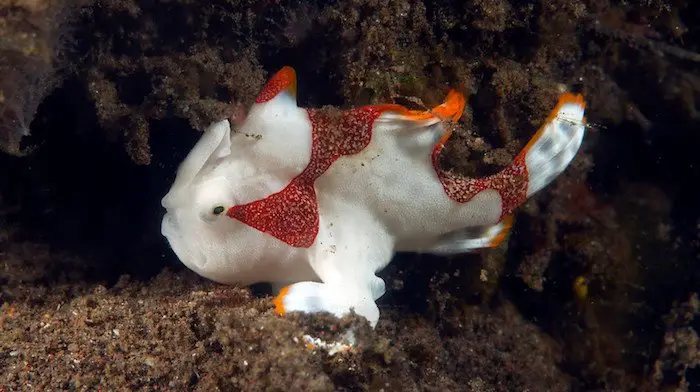
Large Families
Frogfish are extremely fertile creatures. In one mating period, a single female frog fish can lay between 40,000 and 180,000 eggs to be fertilized. That greatly increases the chances of survival in the species as the large number of eggs aren’t likely to all be eaten by predators. But for all those eggs, it is still very difficult to find frogfish unless you know where to look.
The mating process is also very interesting with frogfish. When the time comes, the male frogfish will nudge the female and they will both make their way to the surface. The female will then release the large amount of eggs. These eggs are attached to a ribbon of mucus that acts as a buoyancy aid for the eggs. The male then fertilizes the eggs and they go on their way.
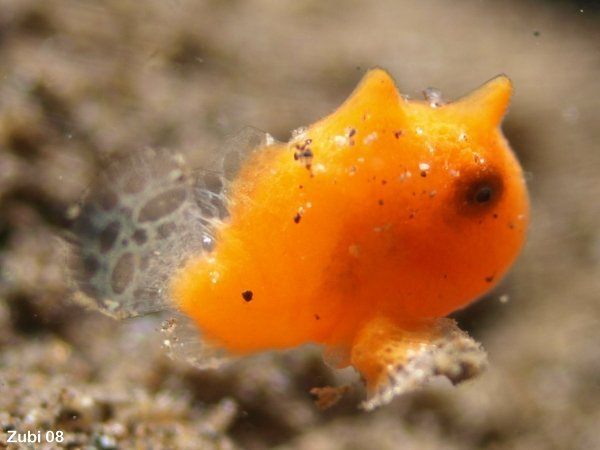
Comes In All Sizes
There are between 49 and 52 different types of frogfish that we currently know of. This fish vary widely in colors and patterns. There is even the hairy frogfish that looks like a shaggy pet, more than a fish. The sizes of the frogfish also vary widely. Frogfish can be anywhere between 5 centimeters long and 50 centimeters long when fully grown.
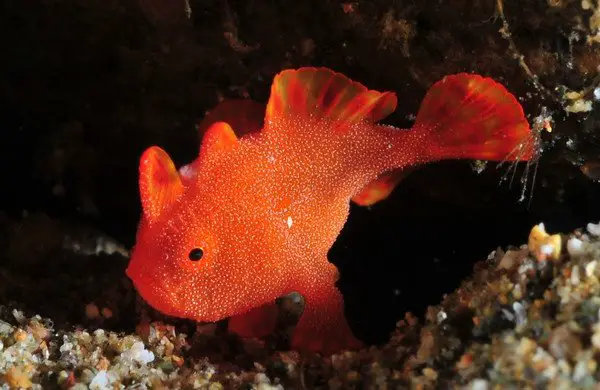
Re-growing Lure
The frogfish relies heavily on the lure on the top of its head. This is how the frogfish attracts prey and gets food. But when you dangle something out so much as food, every once in a while it is bound to get damaged. Whether when a fish is trying to take a bite, or while a frogfish moves through a tight spot, the lure is not impervious to injury. The lure is so crucial to the frogfish that the body will actually regenerate it when damaged or missing. This secures the frogfish’s ability to hunt for prey and stay alive.
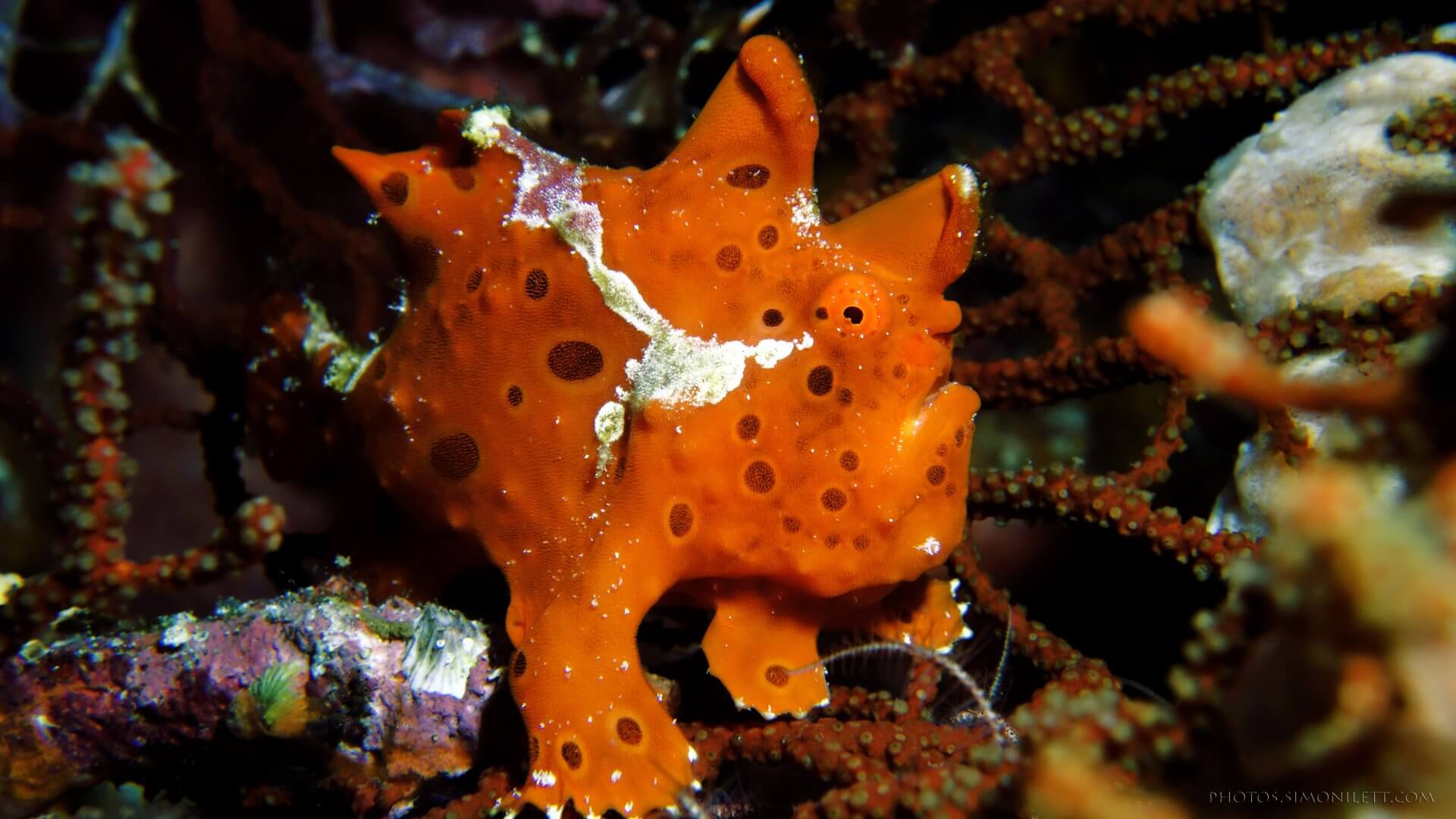
No Scales Here
When most people think of fish they picture scales. However, the frogfish, while having fins and gills, has no scales. Instead, the body of the frogfish is covered with lumps. These lumps can look like the warts of a toad on some types of frogfish. Other frogfish have lumps that are more random and spread out.
The lumps serve a very important purpose. They are a form of camouflage that adds texture to the frogfish. This texture can help them blend in with rocks, sponges or even the grass underwater. These lumps give the frogfish the best chance at blending in by making sure that they aren’t just relying on color to hide themselves.
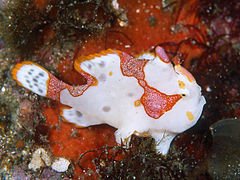
Born Ready
After the eggs are fertilized it takes around two to five days for them to fully develop and hatch. Because the eggs are still attached to the buoyant mucus ribbon, the baby frogfish are born at the top of the water. The babies are born with some natural camouflage as they share the same colors of poisonous slugs and worms in the water. This makes predators hesitant to go near them and increases their chances of survival greatly. They can then make their way down to the depths where the other frog fish are and start their lives.
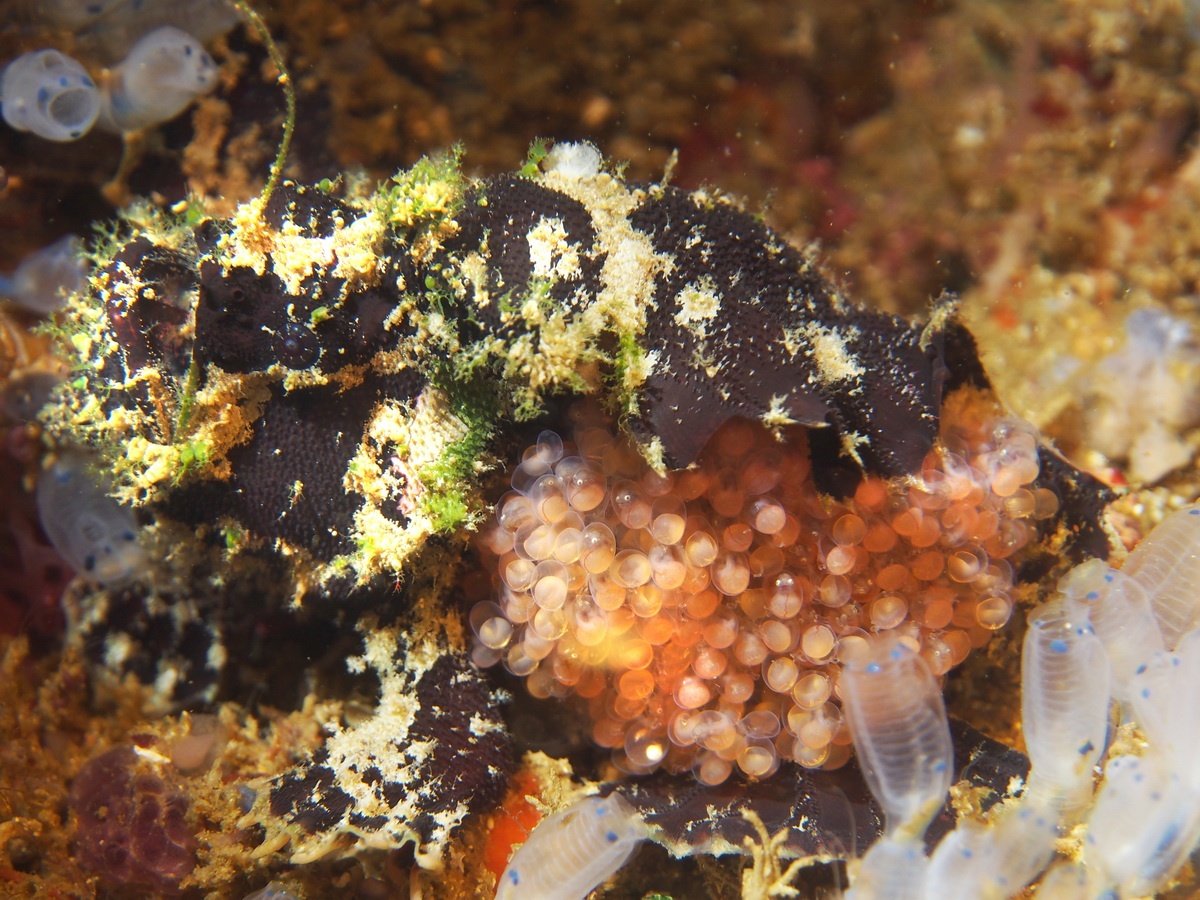
Loners
Frogfish are by no means social creatures. They spend their days on their own looking for food and avoiding other frogfish. This is mostly due to the fact that frogfish are not afraid to eat something as big as them, even if it means cannibalism. The frogfish gets together during mating season long enough to lay and fertilize eggs, then go their separate ways again.
Frogfish don’t really have any predators to fear, so they have taken to going after one another. They put these issues aside once a year for the good of the species, but then go back to avoiding one another. This internal conflict is even greater when different types of frogfish meet up.
Frogfish can sometimes show concern for the young right after they are born, but that really depends on the type of frogfish. Some will stick around long enough to see their young born and keep them safe, while others take off once the fertilization is done.
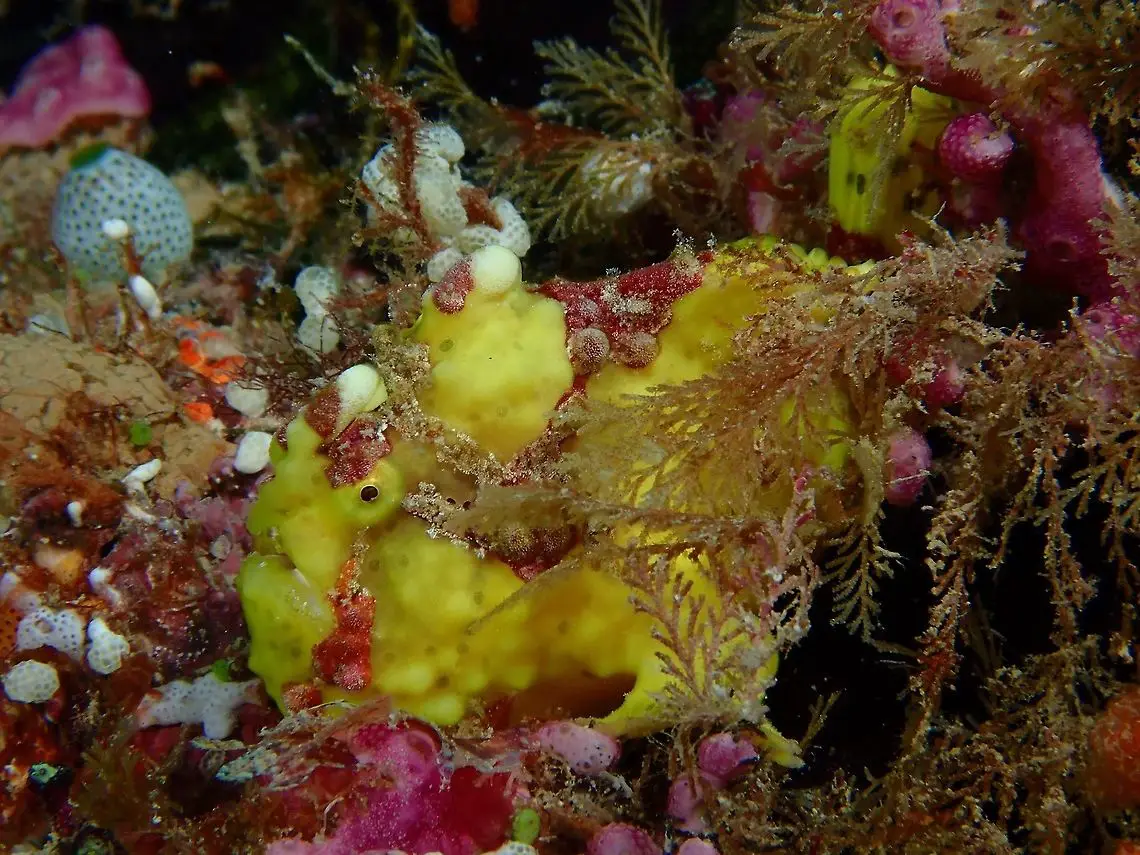
Take A Tour
If you are interested in seeing frogfish in real life, you can book tours in certain locations. The tour guides will let you get up close with frogfish in the wild and offers a great opportunity to take some amazing underwater shots of the creatures. One of the most popular locations is Lembeh, Indonesia. At this location, you will be able to see a wide range of frogfish in one ecosystem.
Still A Mystery
There are still many things that are unknown about the frogfish. Research is trying to gain more information about these odd little creatures, but there is still much more that needs to be discovered. There isn’t a definitive answer as to how long their lifespan is in the wild, or how many types of frogfish there are. Experts can only guess at this point while continuing their work.
Frogfish FAQs
Some of the most frequently asked questions when it comes to frogfish are:
What Are Frogfish?
Antennarius striatus, or frogfish are an aquatic creature related to the anglerfish. They get their name from the appearance of a fish-frog hybrid. The eyes look more bulged, similar to a frog, and use their fins to walk around the ocean, rather than swimming.
How Long Do Frogfish Live?
No one is actually sure how long frogfish can live because of the lack of history and research with these creatures. But researcher’s best guess is over 20 years at least.
Are There Different Types Of Frogfish?
There are actually between 49 and 52 different types of frogfish. They all share the same appetite and walking style, but their appearances vary widely. While some look like the basic frogfish, others look like lumps until you get up close.
Where Can You Find Frogfish?
Frog fish are mostly found in tropical waters, as well as some subtropical climates. The fish try to stick to the reef where they can easily high out and blend in with their surroundings. Frogfish can also be found in areas where there is debris like ropes or chains submerged.
Are Frogfish Poisonous?
Frogfish are not poisonous, but some toad fish are. The frogfish will not sting or otherwise release any poison. But it is widely agreed that they taste horrible and should not be eaten.
What Do Frogfish Eat?
Frogfish mainly eat small fish. They lure these fish in with their Esca, that looks like an easy meal floating for other fish to eat. When the fish gets too close, the frogfish strikes and claims its meal. Frogfish are carnivores and will eat just about anything in desperate times, including other frogfish.
Do They Have Any Interesting Talents?
Frogfish are masters of camouflage and can easily blend into their surroundings when they want to disappear. They are so good at this that it can be almost impossible to spot them if you don’t know where to look.
Frogfish, while slow moving in the water, also have the fastest strike speed of any animal in out our of the water.
Clown frogfish are incredibly interesting little creatures that can have you doing double takes in the water. Whether you want some cool photographs of them or have found your new favorite animal, these little creatures are anything but boring.

